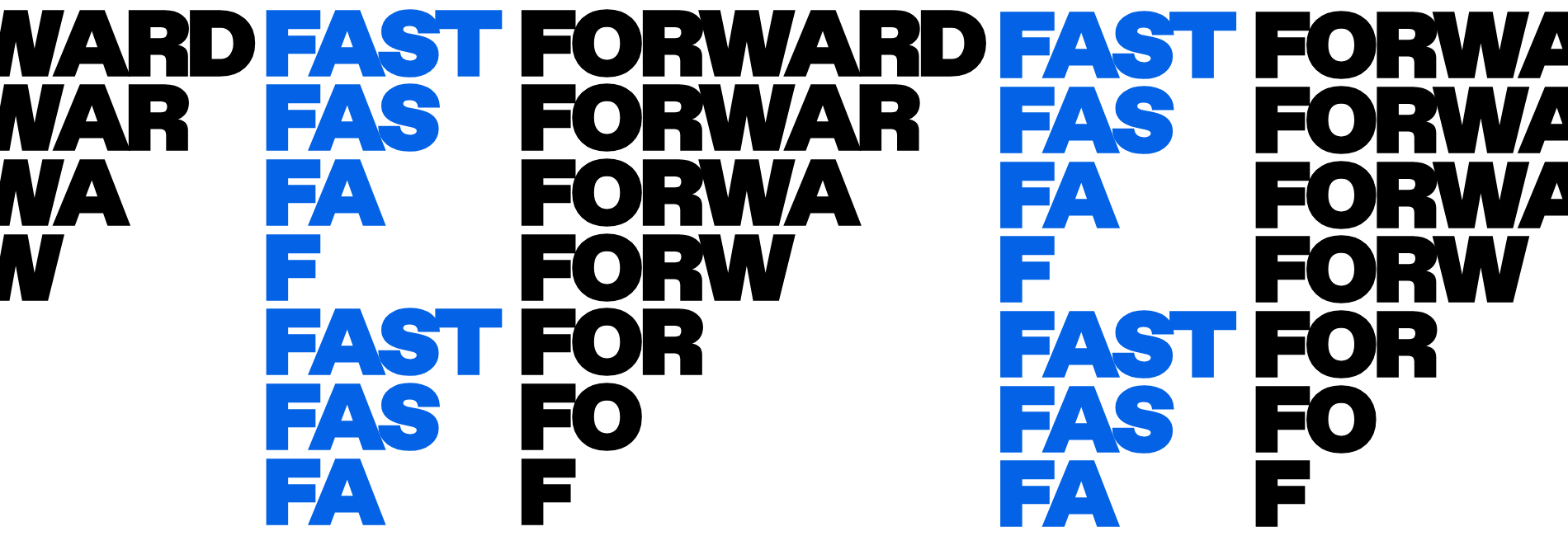
3daysofdesign: FENIX® and Formica® present FAST / FORWARD
From June 18 to 20 at 3daysofdesign in Copenhagen, FENIX® and Formica® join forces and present the FAST / FORWARD project.
The exhibition, curated by Federica Sala, enhances the synergy between the two brands with a narrative that looks to the future while maintaining a connection with the past.
“FAST / FORWARD proposes a journey through time, from the past to the present and vice versa, in a circuit that reflects on the relationship between surfaces, colours, patterns and design styles thanks to the work of six international design studios. Each of them was asked to reinterpret, under the Formica® and FENIX® brands, a decade or a twenty-year period from the 1920s to 2000s,” says Federica Sala.
The designers—Federica Biasi, Laurids Gallée, Panter&Tourron, Thabisa Mjo, Tino Seubert and Uchronia— explore the potential of these materials in contemporary design by combining history with innovation.
Designed by Parco Studio and created by the MUSA team, visitors are welcome to this time-travel experience. The research period goes from the 1920s—the decade following the invention of Formica® high-pressure laminates that started a revolution in the world of living spaces—to 2010, years in which FENIX® entered the world of surfaces with its innovative materials, signalling a new important turning point.
The selection of designers, ranging from Northern Europe to South Africa, highlights the widespread presence of the two brands. The choice embraces not only names linked to industrial design but also to craftsmanship and decoration, exploring languages of different decades through diverse creative approaches.
Come to explore FAST / FORWARD exhibition at 3daysofdesign: Kuglegården Danneskiold-Samsøes Allé 19—21, 1436 Copenhagen
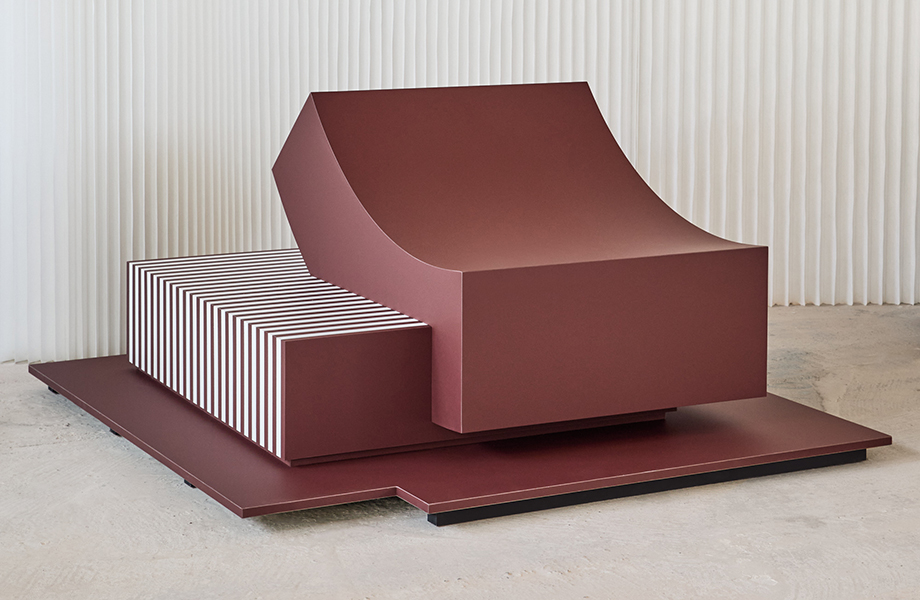
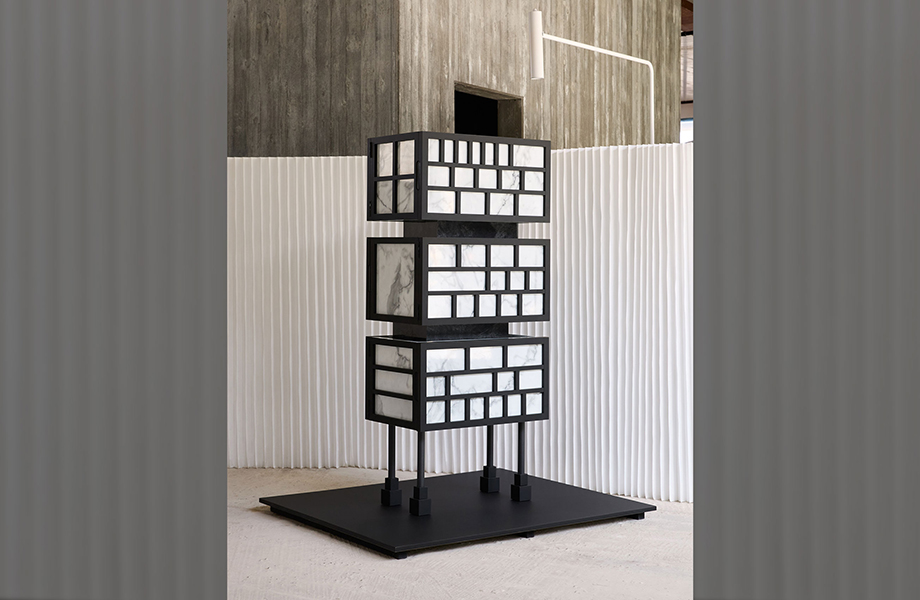
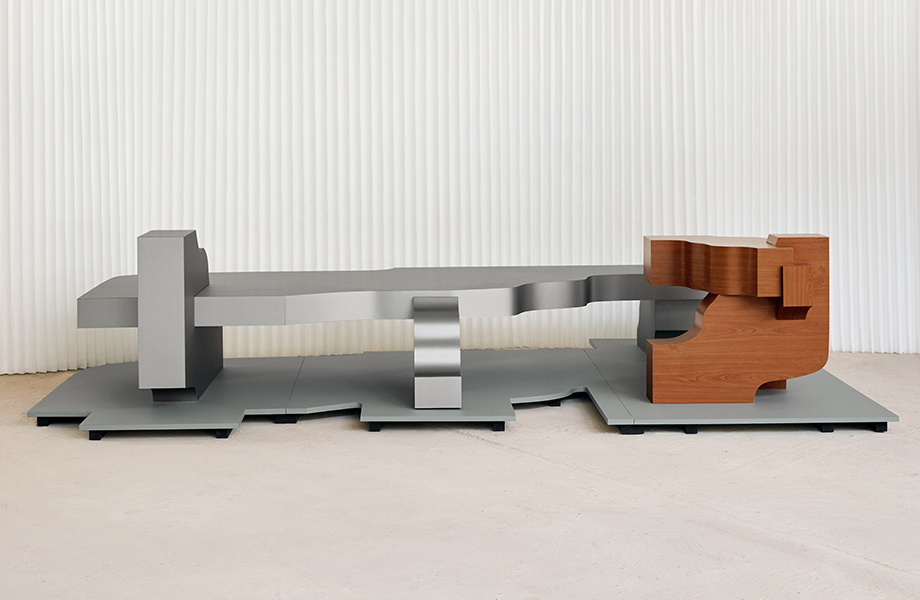
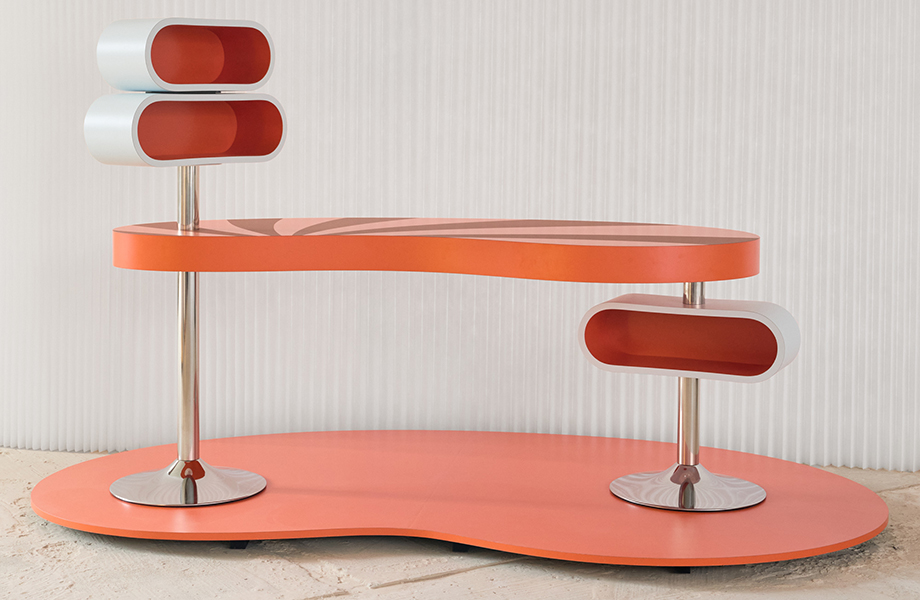
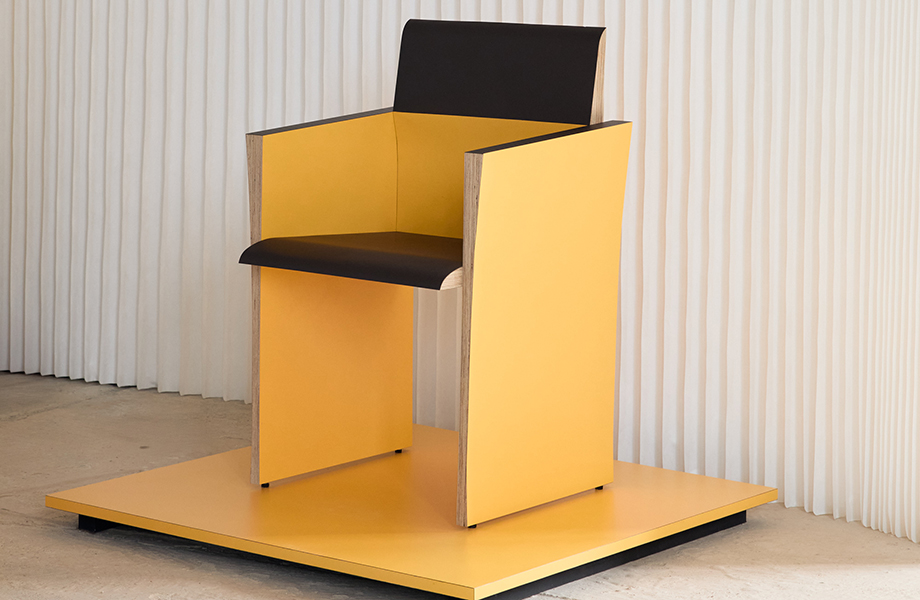
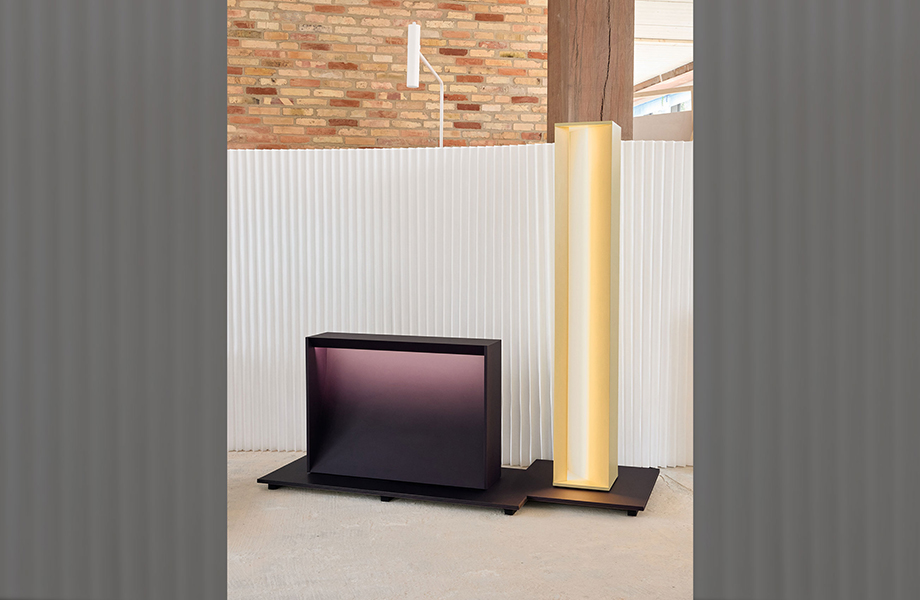







FRED, design by FEDERICA BIASI
Created by Italian designer Federica Biasi, Fred is a monolithic chaise longue that evokes the concept of rest as a mental space, not just a physical one.
The project draws inspiration from the aesthetics of the 2000s and 2010s, as well as from early reflections on emotional and personal well-being in the contemporary world. Fred goes beyond its traditional ergonomic functionality, symbolically becoming an ally of self-care—a space for meditation and rest.
Two essential and sculptural volumes intersect: one becomes the base, the other the seat. The base features a rhythmic alternation of materials—FENIX® Rosso Jaipur and Formica® Sno White—assembled in a striped pattern that adds visual depth by playing with contrasting colours and tactile effects. The seat, on the other hand, is crafted entirely with FENIX® Rosso Jaipur, whose matte and soft-touch features enhance the curved lines of the volume and underscore its sculptural presence.
“The project wasn’t created to conform to the body, but rather as a conceptual sculpture—a visual reminder of the importance of mental health. It’s an object that transcends its mere function to become a symbol: a silent yet powerful invitation to inner reflection,” says Federica Biasi.
01000010 00110010 01000110 - BACK TO THE FUTURE, design by THABISA MJO
01000010 00110010 01000110 — Back to the Future by South African designer Thabisa Mjo is a piece that embraces the design heritage of the 1920s and 1930s and the Art Deco aesthetic by using FENIX® materials and Formica® laminates. It is a cabinet that modernises futurist influences and the concept of progress.
The reflection on time—as suggested by the title Back to the Future—becomes the key to interpreting the project: a volume that serves as a functional sculpture, where design, technology, and memory are interwoven.
The chosen surfaces emphasise the contrast between matte and gloss, matter and form: Formica® Jet Sequoia and Calacatta Marble alternate deep veining and decorative patterns, while FENIX® Nero Ingo and Piombo Doha add visual intensity and a soft tactile experience.
“In this project, I want to highlight that we live in the future that designers in the Art Deco era imagined. Back to the Future is a functional cabinet that reflects the ideas and the style of that time through innovative materials and surfaces capable of being transformed,” says Thabisa Mjo.
BOW, design by LAURIDS GALLÉE
Austrian designer Laurids Gallée, who is based in Rotterdam, presents Bow: a bench and a coffee table inspired by the 1940s and 1950s aesthetic. The fluid lines and material choices reflect on the design of those decades. Both pieces originate from the shaping of a simple form that is modified in size, duplicated, and overlapped across different axes.
The result is a dialogue between two complementary volumes, both built upon a singular and distinctive geometric vocabulary. The bench is crafted in Formica® Country Cherry, while the coffee table finds its finest expressiveness in FENIX® Acciaio Hamilton.
Together, the two pieces stage an aesthetic conversation where the versatility of the surfaces is key: FENIX® innovative materials and Formica® surfaces display their full expressive power, successfully “dressing” such intricate and complex volumes, while enhancing their curves and edges.
“The project investigates the potential of repetition and extrusion, resulting in a composition that possesses an almost uncanny sense of coherence, its underlying logic both evident and elusive. This modular approach yields contrasting volumes in a cohesive visual language,” says Laurids Gallée.
SUNRISE, design by UCHRONIA
Paris-based studio Uchronia presents Sunrise, a desk characterised by soft lines and a bold, ironic aesthetics. This project evokes the spirit of cultural experimentation and innovation of the 1960s, reinterpreted through fluid curves, solid volumes, and a visually intense composition.
The desktop is developed through a radial design that recalls sunrays on the horizon—as its name suggests—while the suspended oval storage modules create a dynamic and ever-moving ensemble.
The selected surfaces and colours—FENIX® Rosso Namib, Formica® Clementine and Arctic Blue—demonstrate the exceptional versatility of the materials: they not only shape the structure but also allow for graphic effects and chromatic compositions that give the project its unique identity. Every curve and detail reflects the quality of the materials and the craftsmanship behind them, blending innovation, durability, and elegance.
“This bold piece highlights the technical excellence and flexibility of FENIX® and Formica® materials. The desk’s surfaces play with soft shades of burnt orange and light blue, evoking a vibrant, retro-futuristic aesthetic, true to the Uchronia universe,“ says Uchronia.
NUDE CHAIR, design by TINO SEUBERT
Four planes intersect at different angles to form Nude Chair, a linear and sophisticated seat designed by Tino Seubert, a German designer based in London.
The project draws inspiration from the radical and sensual aesthetic of the 1970s and the emphasis on the body, freed from conventions and rules. It was a time when form became both a political and personal expression, and design explored fluid volumes, tactile surfaces, and diverse proportions.
Nude Chair expresses a refined synthesis of structure and sensuality, capable of embracing, supporting, and defining the body within a space.
The result is a bold seat where contemporary shapes coexist with vintage colour combinations. The surfaces in direct contact with the body—seat, backrest, and armrests—are made of FENIX® Cacao Orinoco, matte and velvety to the touch, offering a soft, skin-like sensation. The remaining surfaces—outer sides and frame—are done in Formica® Sol, a bright yellow colour with a luminous character.
“The planes gently flare and curve to create natural resting points for the arms and neck, echoing the fluid forms typical of 1970s design. The chair features a striking contrast of two colours selected from palettes of the same era,” says Tino Seubert.
DISPLAY (1X6) AND DISPLAY (7X10), design by PANTER&TOURRON
Display (1x6) and Display (7x10) are two sculptural lamps designed by the Swiss studio Panter&Tourron, founded by Stefano Panterotto and Alexis Tourron. With a self-imposed grid, the two luminous sculptures explore the relationship between light, matter and form through linear geometric volumes.
Reinterpreting the language of the 1980s and 1990s—a time in which design experimentation was translated into ergonomic lines and geometric volumes. With this project, the designer duo goes beyond mere functionality to focus on formal research.
The two lamps are distinguished by size and materials: the first, taller and slimmer, is entirely in a pale and opaque Formica® Pale Gold, while the second, large and statuesque, is made of a distinctive and deep FENIX® Viola Orissa. Intense colours, essential lines and clear surfaces welcome the light that comes from the volumes and spreads delicately on the material, revealing unexpected and changing tones.
“Stripped of their functional aspect, the lamps enhance form and surface, where concave and convex lines create changing patterns of light and shadow. The two objects are made with different materials: when the light touches their surfaces, subtle nuances reveal their unique qualities,” says Panter&Tourron.
FRED, design by FEDERICA BIASI
Created by Italian designer Federica Biasi, Fred is a monolithic chaise longue that evokes the concept of rest as a mental space, not just a physical one.
The project draws inspiration from the aesthetics of the 2000s and 2010s, as well as from early reflections on emotional and personal well-being in the contemporary world. Fred goes beyond its traditional ergonomic functionality, symbolically becoming an ally of self-care—a space for meditation and rest.
Two essential and sculptural volumes intersect: one becomes the base, the other the seat. The base features a rhythmic alternation of materials—FENIX® Rosso Jaipur and Formica® Sno White—assembled in a striped pattern that adds visual depth by playing with contrasting colours and tactile effects. The seat, on the other hand, is crafted entirely with FENIX® Rosso Jaipur, whose matte and soft-touch features enhance the curved lines of the volume and underscore its sculptural presence.
“The project wasn’t created to conform to the body, but rather as a conceptual sculpture—a visual reminder of the importance of mental health. It’s an object that transcends its mere function to become a symbol: a silent yet powerful invitation to inner reflection,” says Federica Biasi.
01000010 00110010 01000110 - BACK TO THE FUTURE, design by THABISA MJO
01000010 00110010 01000110 — Back to the Future by South African designer Thabisa Mjo is a piece that embraces the design heritage of the 1920s and 1930s and the Art Deco aesthetic by using FENIX® materials and Formica® laminates. It is a cabinet that modernises futurist influences and the concept of progress.
The reflection on time—as suggested by the title Back to the Future—becomes the key to interpreting the project: a volume that serves as a functional sculpture, where design, technology, and memory are interwoven.
The chosen surfaces emphasise the contrast between matte and gloss, matter and form: Formica® Jet Sequoia and Calacatta Marble alternate deep veining and decorative patterns, while FENIX® Nero Ingo and Piombo Doha add visual intensity and a soft tactile experience.
“In this project, I want to highlight that we live in the future that designers in the Art Deco era imagined. Back to the Future is a functional cabinet that reflects the ideas and the style of that time through innovative materials and surfaces capable of being transformed,” says Thabisa Mjo.
BOW, design by LAURIDS GALLÉE
Austrian designer Laurids Gallée, who is based in Rotterdam, presents Bow: a bench and a coffee table inspired by the 1940s and 1950s aesthetic. The fluid lines and material choices reflect on the design of those decades. Both pieces originate from the shaping of a simple form that is modified in size, duplicated, and overlapped across different axes.
The result is a dialogue between two complementary volumes, both built upon a singular and distinctive geometric vocabulary. The bench is crafted in Formica® Country Cherry, while the coffee table finds its finest expressiveness in FENIX® Acciaio Hamilton.
Together, the two pieces stage an aesthetic conversation where the versatility of the surfaces is key: FENIX® innovative materials and Formica® surfaces display their full expressive power, successfully “dressing” such intricate and complex volumes, while enhancing their curves and edges.
“The project investigates the potential of repetition and extrusion, resulting in a composition that possesses an almost uncanny sense of coherence, its underlying logic both evident and elusive. This modular approach yields contrasting volumes in a cohesive visual language,” says Laurids Gallée.
SUNRISE, design by UCHRONIA
Paris-based studio Uchronia presents Sunrise, a desk characterised by soft lines and a bold, ironic aesthetics. This project evokes the spirit of cultural experimentation and innovation of the 1960s, reinterpreted through fluid curves, solid volumes, and a visually intense composition.
The desktop is developed through a radial design that recalls sunrays on the horizon—as its name suggests—while the suspended oval storage modules create a dynamic and ever-moving ensemble.
The selected surfaces and colours—FENIX® Rosso Namib, Formica® Clementine and Arctic Blue—demonstrate the exceptional versatility of the materials: they not only shape the structure but also allow for graphic effects and chromatic compositions that give the project its unique identity. Every curve and detail reflects the quality of the materials and the craftsmanship behind them, blending innovation, durability, and elegance.
“This bold piece highlights the technical excellence and flexibility of FENIX® and Formica® materials. The desk’s surfaces play with soft shades of burnt orange and light blue, evoking a vibrant, retro-futuristic aesthetic, true to the Uchronia universe,“ says Uchronia.
NUDE CHAIR, design by TINO SEUBERT
Four planes intersect at different angles to form Nude Chair, a linear and sophisticated seat designed by Tino Seubert, a German designer based in London.
The project draws inspiration from the radical and sensual aesthetic of the 1970s and the emphasis on the body, freed from conventions and rules. It was a time when form became both a political and personal expression, and design explored fluid volumes, tactile surfaces, and diverse proportions.
Nude Chair expresses a refined synthesis of structure and sensuality, capable of embracing, supporting, and defining the body within a space.
The result is a bold seat where contemporary shapes coexist with vintage colour combinations. The surfaces in direct contact with the body—seat, backrest, and armrests—are made of FENIX® Cacao Orinoco, matte and velvety to the touch, offering a soft, skin-like sensation. The remaining surfaces—outer sides and frame—are done in Formica® Sol, a bright yellow colour with a luminous character.
“The planes gently flare and curve to create natural resting points for the arms and neck, echoing the fluid forms typical of 1970s design. The chair features a striking contrast of two colours selected from palettes of the same era,” says Tino Seubert.
DISPLAY (1X6) AND DISPLAY (7X10), design by PANTER&TOURRON
Display (1x6) and Display (7x10) are two sculptural lamps designed by the Swiss studio Panter&Tourron, founded by Stefano Panterotto and Alexis Tourron. With a self-imposed grid, the two luminous sculptures explore the relationship between light, matter and form through linear geometric volumes.
Reinterpreting the language of the 1980s and 1990s—a time in which design experimentation was translated into ergonomic lines and geometric volumes. With this project, the designer duo goes beyond mere functionality to focus on formal research.
The two lamps are distinguished by size and materials: the first, taller and slimmer, is entirely in a pale and opaque Formica® Pale Gold, while the second, large and statuesque, is made of a distinctive and deep FENIX® Viola Orissa. Intense colours, essential lines and clear surfaces welcome the light that comes from the volumes and spreads delicately on the material, revealing unexpected and changing tones.
“Stripped of their functional aspect, the lamps enhance form and surface, where concave and convex lines create changing patterns of light and shadow. The two objects are made with different materials: when the light touches their surfaces, subtle nuances reveal their unique qualities,” says Panter&Tourron.
FRED, design by FEDERICA BIASI
Created by Italian designer Federica Biasi, Fred is a monolithic chaise longue that evokes the concept of rest as a mental space, not just a physical one.
The project draws inspiration from the aesthetics of the 2000s and 2010s, as well as from early reflections on emotional and personal well-being in the contemporary world. Fred goes beyond its traditional ergonomic functionality, symbolically becoming an ally of self-care—a space for meditation and rest.
Two essential and sculptural volumes intersect: one becomes the base, the other the seat. The base features a rhythmic alternation of materials—FENIX® Rosso Jaipur and Formica® Sno White—assembled in a striped pattern that adds visual depth by playing with contrasting colours and tactile effects. The seat, on the other hand, is crafted entirely with FENIX® Rosso Jaipur, whose matte and soft-touch features enhance the curved lines of the volume and underscore its sculptural presence.
“The project wasn’t created to conform to the body, but rather as a conceptual sculpture—a visual reminder of the importance of mental health. It’s an object that transcends its mere function to become a symbol: a silent yet powerful invitation to inner reflection,” says Federica Biasi.



